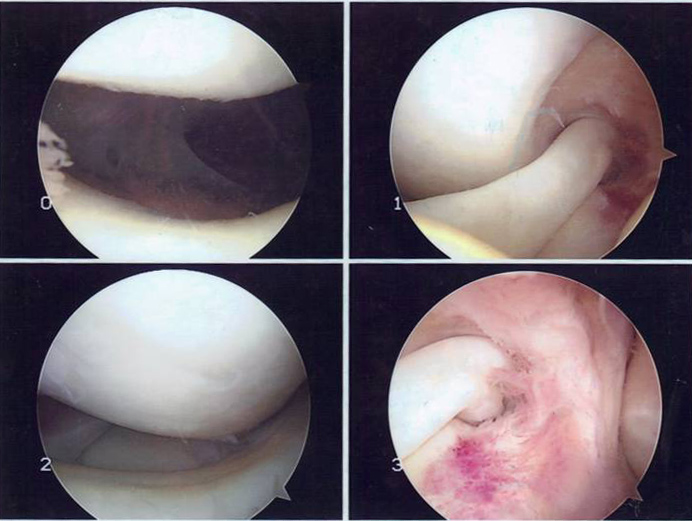 Arthroscopy of the knee is a relatively simple procedure which is done through key hole surgery. In this procedure, two or three small cuts (less than 1 cm size) are made and instruments are introduced into the knee to assess the condition of the articular cartilage (lining of the knee joint surface), and other structures inside the joint. In addition to visualisation, certain treatment procedures can be undertaken through key hole surgery techniques.
Arthroscopy of the knee is a relatively simple procedure which is done through key hole surgery. In this procedure, two or three small cuts (less than 1 cm size) are made and instruments are introduced into the knee to assess the condition of the articular cartilage (lining of the knee joint surface), and other structures inside the joint. In addition to visualisation, certain treatment procedures can be undertaken through key hole surgery techniques.
Aim of surgery
Arthroscopy of the knee is both diagnostic as well as therapeutic. The diagnostic indication is to gather more information about the knee, which is in addition to information obtained from clinical examination, radiographs and MR (Magnetic Resonance Imaging) scans.
The treatment procdures in patients with osteoarthtiris include dealing with chondral flaps (flaps of articular cartilage in the knee), meniscal tear - repair or excision, microfracture, chondrocyte implantation, realignment procedures, synovectomy, removal of loose bodies and ligament reconstructions.
"The arthritis in my knee had made it so hard to do even usual simple acivities. Then I had a key hole operation ...... Three years on, I am still doing well and can go for walks without worrying about taking pain killers." - Susan Davies, Cardiff
Who is it for
Arthroscopy is beneficial in patients with early osteoarthritis, where symtoms are mild or intermittent. Patients with advanced disease are unlikely to benefit from this procedure
What does it involve
Knee arthroscopy is done under general anaesthetic as a day case procedure. Usual duration of surgery is 20 to 30 minutes and most patients are able to go home on the day of surgery. No stitches are required and the small incisions of surgery heal up in 7 to 10 days.
Care after surgery
Depending on the extent of procedure, recovery varies from 1 to 3 weeks. Some patients having microfracture technique may need to be on crutches for 4 to 6 weeks.
Please, click on 'Risks of knee arthroscopy' to know more
